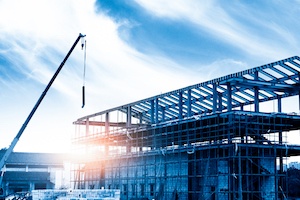What Aluminum and Steel Tariffs Mean for Your Construction Project
 In March 2018, the United States imposed steel (25%) and aluminum (10%) tariffs on imports from Canada, Mexico, and the European Union. Both steel and aluminum are significant components of construction materials, but how significant will steel and aluminum tariffs impact the overall cost of construction on a typical construction project?
In March 2018, the United States imposed steel (25%) and aluminum (10%) tariffs on imports from Canada, Mexico, and the European Union. Both steel and aluminum are significant components of construction materials, but how significant will steel and aluminum tariffs impact the overall cost of construction on a typical construction project?
First, let’s consider the specific applications of steel and aluminum in a construction project. Steel is used in a variety of construction applications, including structural steel for buildings, bridges and pipelines, and steel rebar used to reinforce concrete and asphalt. Aluminum is also a prevalent construction material used in roofing systems, exteriors, and window frames.
With the steel tariff arguably being more impactful to the industry, let’s examine the cost of construction on a project that requires a significant amount of structural steel. Structural steel is comprised of raw steel plus fabrication costs. In addition, there are delivery costs to the project site and installation costs.
In early 2018 and before the steel tariff was announced, the price per ton for raw steel hovered around $600 per ton with the price rising up to over $900 per ton compared. Of course numerous factors contribute to the price of steel, not the least of which is basic supply vs. demand economics; nonetheless, the 25% import tariff certainly put upward pressure on the price of steel.
In order to determine the impact of this increase, let’s assume that the construction of a 300,000-square-foot high-rise building was planned for early 2018. The estimate cost of construction is $60,000,000 and the project calls for 3,500 tons of raw steel fabricated to support the structure. At $600 per ton that totals $2,100,000, but at $900 per ton the cost is $3,150,000, an increase of 50%.
Fifty percent is a significant increase, but steel is only one component of the cost of construction. In this example, in early 2018 steel would have comprised only 3.5% of the total construction costs compared to closer to 5.0% after the price increase. We can only speculate as to whether this increase, as a percent or in total dollars, would change a project owner’s decision to proceed with a project, but the increase certainly poses a risk to the steel fabricator and erector.
In fact, the longer the lead time from bid to installation, the more risk that a contractor takes on. For instance, using the above example, if a contractor priced its work in early 2018 but fabrication and installation lingered into the second half of 2018, the 50% increase could be the difference between a profit and a significant loss.
Although contractors are not in the business of predicting the price of construction components, there are measures that can mitigate risk. For example, contractors who are impacted by steel and aluminum price fluctuations can negotiate a price escalation clause in their contracts with general contractors and project owners. These terms would allow a contractor to adjust its price between bid to the time of actual procurement, fabrication, and installation. Other protective measures include monitoring of market condition, providing for sufficient project contingencies, and consideration of pre-purchasing materials to lock in pricing.







